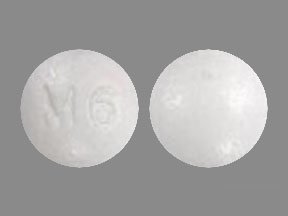Myambutol Disease Interactions
There are 4 disease interactions with Myambutol (ethambutol).
Ethambutol (applies to Myambutol) optic neuritis
Major Potential Hazard, High plausibility. Applicable conditions: Visual Defect/Disturbance
Ethambutol is contraindicated in patients with known optic neuritis unless clinical judgement determines that it may be used. Ethambutol can produce decreases in visual acuity which appear to be due to optic neuritis. This may be related to dose and duration of treatment, and is generally reversible when administration of the drug is discontinued promptly. However, irreversible blindness has been reported. Ethambutol should not be used in patients who are unable to identify and report visual side effects or changes in vision such as young children or unconscious patients. It should be administered cautiously and only after careful consideration of risks and benefits in patients with preexisting visual defects such as cataracts, diabetic retinopathy, or recurrent inflammatory conditions of the eye. Ophthalmologic testing of visual acuity, visual field, and color discrimination is required before and during treatment. However, visual changes may be difficult to evaluate in some cases, since they may be related to the underlying disease rather than the drug.
Ethambutol (applies to Myambutol) hepatic impairment
Moderate Potential Hazard, Moderate plausibility. Applicable conditions: Liver Disease
Liver toxicities including fatalities have been reported when using ethambutol. Caution is advised, especially if using in patients with hepatic impairment. Baseline and periodic assessment of hepatic function should be performed.
Ethambutol (applies to Myambutol) hyperuricemia
Moderate Potential Hazard, High plausibility. Applicable conditions: Gout
Ethambutol may commonly cause hyperuricemia, which has been reported in up to two-thirds of treated patients. Occasionally, it has led to joint arthralgias and gouty arthritis after 1 to 2 months of therapy. Serum uric acid levels should be monitored in patients with preexisting hyperuricemia or gout during ethambutol therapy, and appropriate measures (e.g., administration of uricosuric agents) taken to prevent the development or exacerbation of gout.
Ethambutol (applies to Myambutol) renal dysfunction
Moderate Potential Hazard, High plausibility.
Ethambutol is primarily eliminated by the kidney. Patients with renal impairment may be at greater risk for adverse effects from ethambutol, including optic neuritis, due to decreased drug clearance. Therapy with ethambutol should be administered cautiously in patients with renal impairment. Dosage adjustments are recommended in moderate renal impairment but should be based on serum levels of ethambutol.
Switch to professional interaction data
Myambutol drug interactions
There are 156 drug interactions with Myambutol (ethambutol).
More about Myambutol (ethambutol)
- Myambutol consumer information
- Check interactions
- Compare alternatives
- Drug images
- Side effects
- Dosage information
- During pregnancy
- Generic availability
- Drug class: miscellaneous antituberculosis agents
- Breastfeeding
- En español
Related treatment guides
Drug Interaction Classification
| Highly clinically significant. Avoid combinations; the risk of the interaction outweighs the benefit. | |
| Moderately clinically significant. Usually avoid combinations; use it only under special circumstances. | |
| Minimally clinically significant. Minimize risk; assess risk and consider an alternative drug, take steps to circumvent the interaction risk and/or institute a monitoring plan. | |
| No interaction information available. |
See also:
Further information
Always consult your healthcare provider to ensure the information displayed on this page applies to your personal circumstances.


